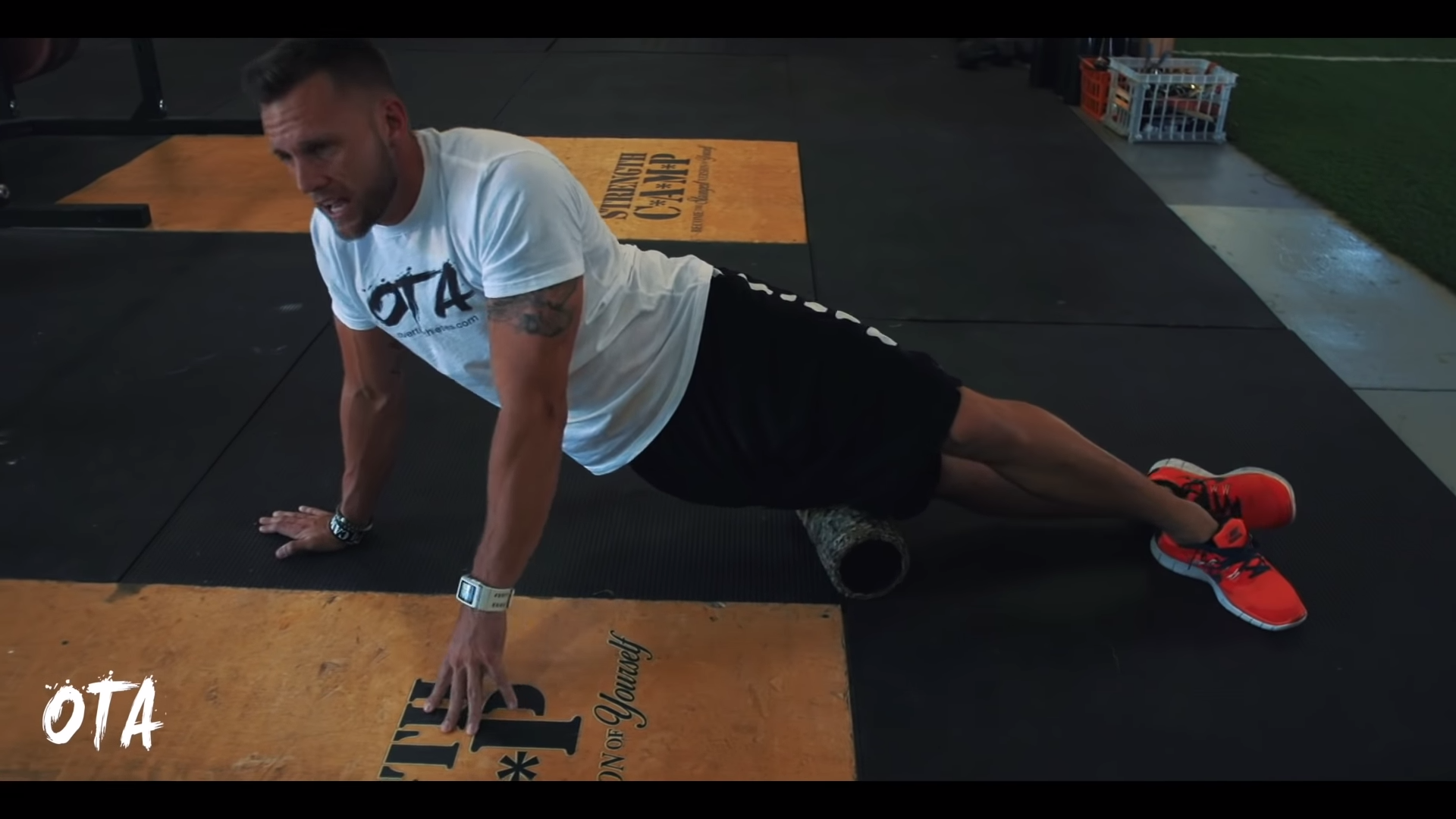4 Steps to Fix Jumper’s Knee

I talk a lot about vertical jumping and sprinting and often use both to program for my athlete’s. So I get a lot of questions about jumper’s knee. Oftentimes people self-diagnose themself with jumper’s knee while it may be something else. If you have a serious knee injury or experience a lot of pain, that’s something you should get checked out so you can have a lasting career.
However, if you know for sure you have jumper’s knee, this blog post should help.
If a guy I train with is having a knee issue, it’s something I can usually pick up on by watching them move while training and seeing what imbalances they may have.
Now, if one of my athletes comes to me with a little knee discomfort, these are four steps I recommend to help solve Jumper’s Knee:
WHAT IS JUMPER’S KNEE
Jumper’s knee is technically referred to as patellar tendonitis. It’s a common injury or inflammation of the patellar tendon which connects your patella (kneecap) to the tibia (shinbone).
Oftentimes, this inflammation is a result of the knee joint overcompensating for the ankle and hip joints. When this happens over time, things like MCL, ACL, or Meniscus tears can happen because of an athlete favoring the knee joint.
Naturally, we want to work out these imbalances and establish balance in the lower limb to eliminate jumper’s knee and avoid the long list of more devastating injuries that can stem from jumper’s knee.
FOUR STEPS TO FIX JUMPER’S KNEE
RELIEVE STRESS

In order to relieve stress on the quads, you’ll want to passively elongating them.
How?
While most guys want to immediately go into a deep quadriceps stretch, this can forcibly pull on the muscles possibly giving you even more inflammation. This is active elongation. Instead, I like to utilize a foam roller which allows you to “passively” stretch the quad by rolling all over the front and side of the leg.
This acts almost as a massage to gently open up the quadriceps: (rectus femoris, Vastus Intermedius, Vastus Medialis, and Vastus Lateralis as well as IT band).
STRENGTHEN THE GLUTES

Having weak glutes can actually place your knee out of alignment with the hip joint. This may become obvious when you’re going into a jump for example, as the glutes can’t support the knee. You know this is the case when you see guy’s knees cave in before taking off.
A lack of glute strength, causes you to overcompensate across the entire knee joint, so be sure you’re spending time to activate and build your glute strength to support health of your knees.
There are a bunch of great exercises to strengthen the glutes. Some of them include:
- Single Leg Glute Bridges
- Romanian Deadlifts
- Hip Thrusts
- Single Leg Hip Extensions
ANKLE MOBILITY DRILLS
Tight ankles can also cause you to over-stress the knee eventually leading to inflammation. In order to develop ankle mobility and protect your knees, you can work through some ankle mobility drills which support dorsiflexion of the ankle knee.

A great stretch for more ankle mobility is standing in front of a barbell with a staggered stance. You want to focus on pushing forward and driving the knee directly over the ankle.
You can also perform my ankle warm-up series.
TERMINAL KNEE EXTENSIONS
My favorite knee drill is commonly used in physical therapy as both pre and post rehabilitation. Terminal Knee Extensions are oftentimes used in the process of recovering from ACL surgery.
It helps to strengthen the muscles across the knee joints which is why it’s also a great drill to prevent jumper’s knee or other knee injuries.
Here’s How To Perform a TKE:

- Anchor a band to something and wrap it around the back of your knee.
- Balancing on one foot, lift onto the ball of your other foot.
- Gently press your heel to the floor and repeat
Another important practice for reducing any knee pain is reducing your overall load when experiencing any discomfort. To those who may be playing basketball or doing regular jump training, if you’re starting to have any knee pain cut back on those activities for awhile.
Incorporating these four modalities into your training help reduce inflammation and strengthen the knee(s) to prevent future injury:
- Foam Rolling
- Strengthening the Glutes
- Ankle Mobility
- TKE’s.
I hope that helps to solve your Jumper’s Knee and get you back to training.